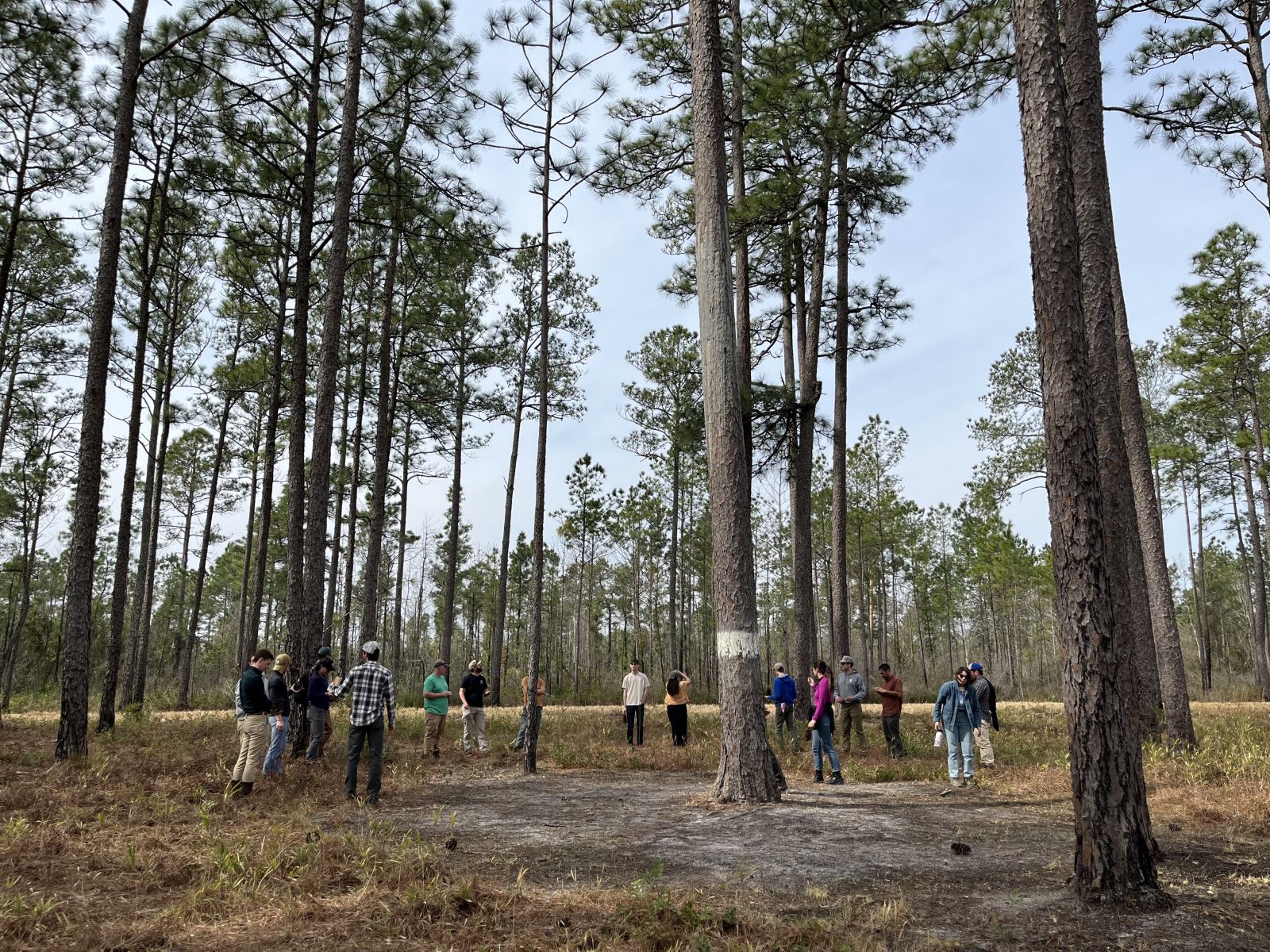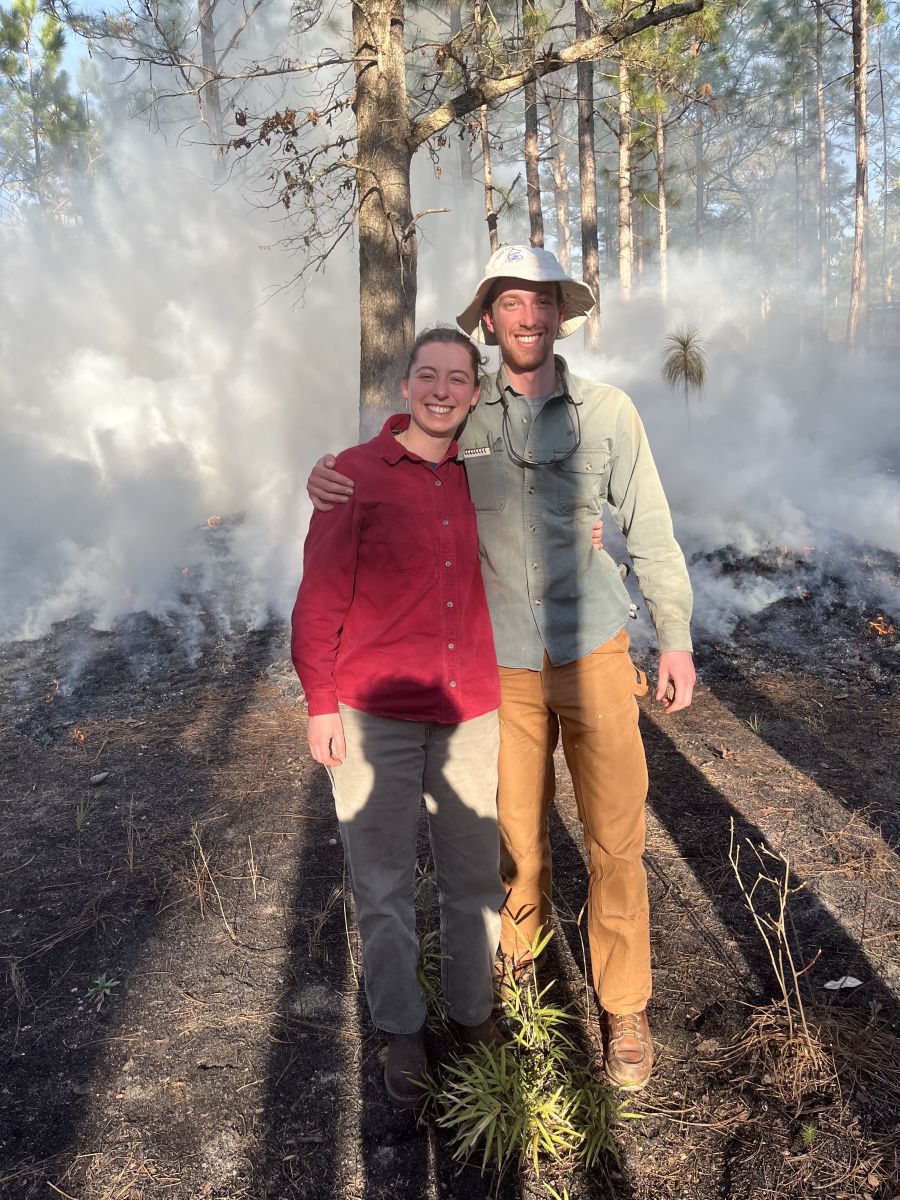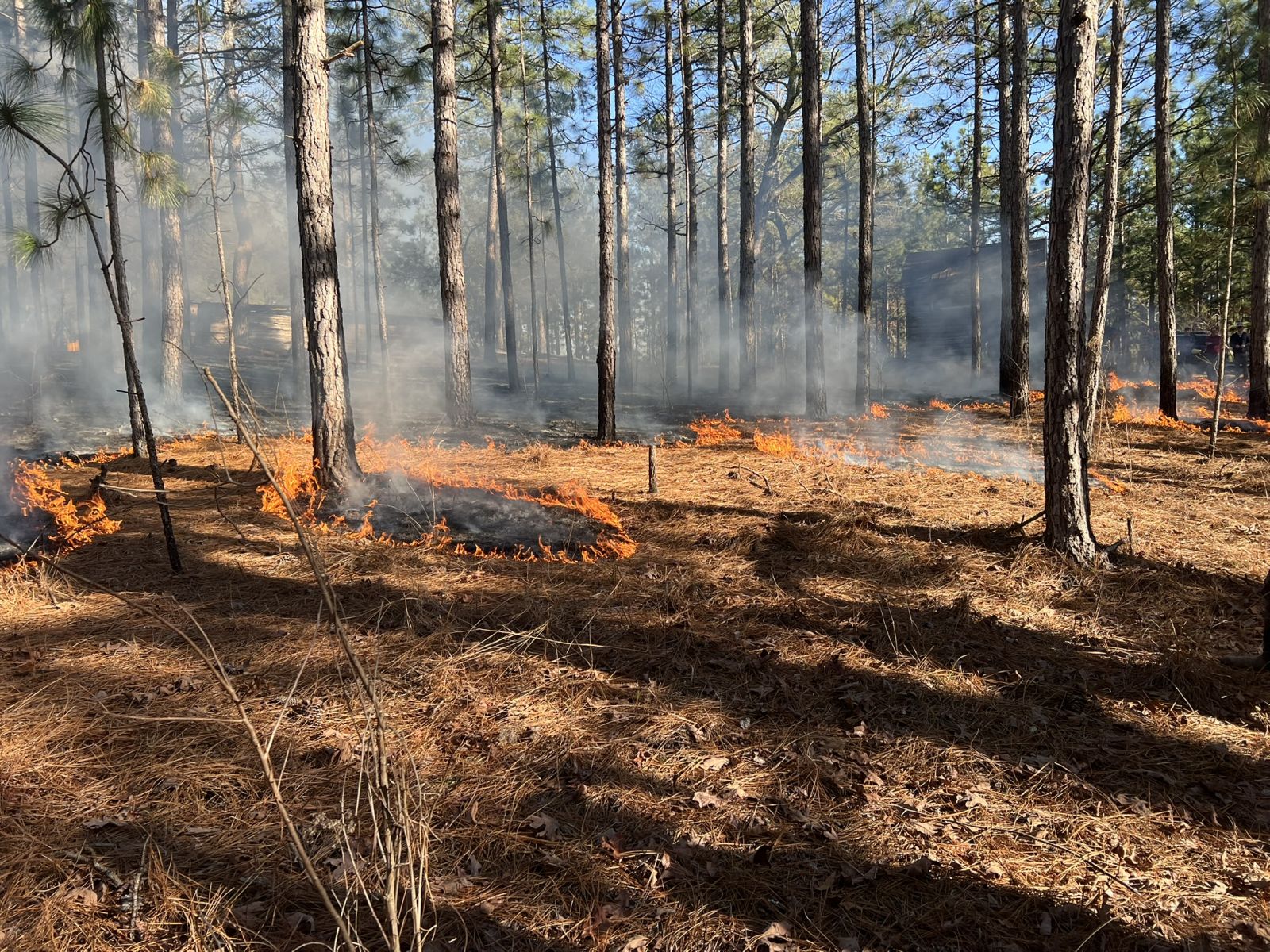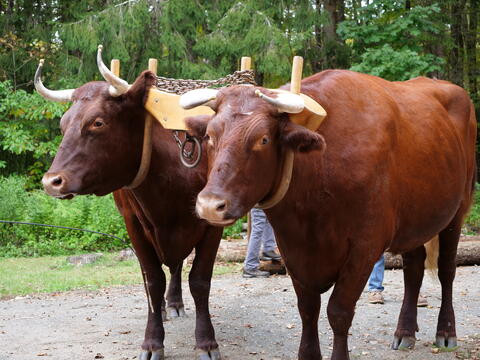
By: Mia Ambroiggio ‘26 MEM
This past March, forestry students headed to the Southeast for spring break to learn about wildlife and forest management, timber products, and community-engaged prescribed burning. Led by YSE lecturer and Yale Forests director of forest and agricultural operations Joe Orefice, and supported by Aaron Donato ’25 MF, the Southern Forest and Forestry Field Trip carries on a tradition at The Forest School dating back to its inception 125 years ago. Students departed from Marsh Hall on Sunday morning and headed south, listening to a collective playlist they had made together — entitled “Appalachian Sunset” and consisting of Joan Baez, Jim Croce, John Denver, and more — while en route to their first stop: West Virginia.
“This year’s Southern Forest and Forestry Field Trip was unique in its variety. From a frigid New Haven March to balmy Carolina afternoons, we watched the blurring trees through the windows of our zippy minivans,” says Nate McMullen ’25 MF.
The group arrived in Wardensville, West Virginia, to meet Gregg Slezak, deputy district ranger with the George Washington National Forest, and Charlie Faires ’19 MF, north zone silviculturist, Lee Ranger District. Slezak and Faires provided an overview of the National Forest System, including National Environmental Policy Act (NEPA) processes, timber protocols, and general priorities and challenges. The group then toured multiple stops along the timber operations process, including an active cutting unit and a timber sale. Within the context of timber operations, the team also learned about wildlife management and restoration burning.
That afternoon, the group headed toward Southern Pines, North Carolina. After a morning spent with The Nature Conservancy visiting Calloway Forest Preserve, they spent the afternoon with Jesse Wimberley of the Sandhills Prescribed Burn Association. The group was able to participate in a prescribed burn and learn about how to authentically engage communities in prescribed burning practices.
Jesse Wimberley hosts students for a prescribed burn on his property. Photo: Cindy Cifuentes
“Being able to meet Jesse was an unmatched opportunity to learn about the cultural, historical, and ecological importance of fire in a time of political and environmental change,” says Sarah Lloyd ’26 MEM. The group valued Wimberley’s extensive knowledge and wisdom on the topic — as both the founder of the association and an active community organizer — and he was a personal highlight for many on the trip.
“Many people in this country, especially in rural areas, feel left behind, feel that there has been something lost from our physical and social landscape. To see Jesse addressing this issue through creating a community learning space that connects people to place, to ecological management and stewardship, was an extremely powerful thing,” says Cayce Morrison ’26 MEM.
On Wednesday morning, the group headed to Fort Liberty for a day of programming with the Forestry Branch of the United States Army, who manages the property for military training, public recreation, and environmental stewardship. During the visit, the group learned how the military is a prominent landowner in the Southeast and, therefore, a key stakeholder in conservation and endangered species management. This is especially true at Fort Liberty, which is extremely ecologically productive due to historical military training practices that resulted in fires and, consequently, created important habitat for the endangered red-cockaded woodpecker.
On Thursday, the group visited the Croatan National Forest to learn about wildlife management in pocosin ecosystems, which is most commonly translated from the Algonquian language — who are the original stewards of these ecosystems — to “swamp on a hill.”
That afternoon, the group switched gears and toured International Paper Company to learn about fiber procurement and mill operations. They enjoyed one final night in Emerald Isle before heading back home to New Haven. On the way back, they stopped at Hoffman Forest for a field visit with Sam Cook, executive director of Forest Assets, and Jimmy Bullock of Resource Management Service, LLC.

Students learn about silviculture in the Croatan National Forest. Photo: Sarah Lloyd
The Southern Forests and Forestry Field Trip provided a holistic understanding of forestry in the Southeast United States and the diverse set of stakeholders who interact and steward these landscapes. “From silviculture to prescribed burns to pocosin wetlands, we really learned about so many aspects of southern forestry. I really enjoyed hearing from not only foresters, but from wildlife biologists and burn crew members about their forest management practices,” says Cindy Cifuentes ’25 MF.
In between these stops were pockets of time dedicated to reflecting on the diverse range of stakeholders the students were learning from, sharing food, and swimming in the ocean.
“Listening to some of the passionate stewards of these regions and exploring the astonishingly unique ecosystems they care for was truly inspiring. My favorite part of the trip was spending time with my fellow students and listening to the wonderful stories that many of our hosts shared with us about their personal connections to the landscape. The memories I made on this trip will last me a lifetime, and I’m so grateful to Joe and Aaron for everything they did to make it so special,” says Jack Hatajik ’25 MFS.

Sarah Lloyd ’26 MEM and Cayce Morrison ’26 MEM participate in a prescribed burn with the Sandhills Prescribed Burn Association. Photo: Sarah Lloyd





